The Right Stuff: Puppies Grow Into a Rhino’s Best Friend
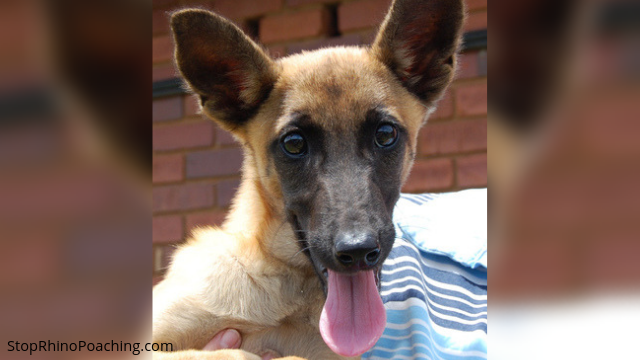
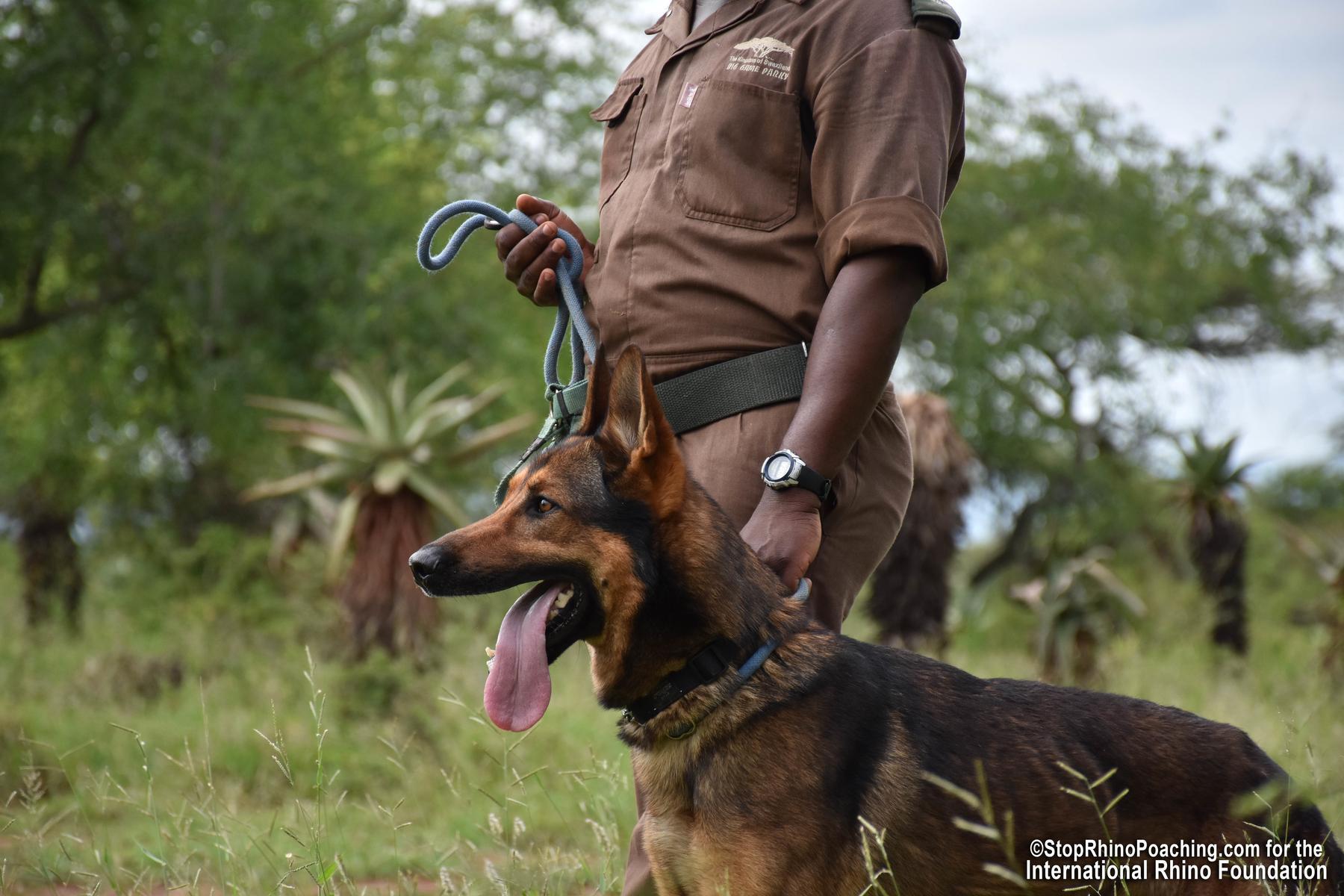
A well-trained Rhino dog and its handler are powerful weapons against wildlife crime and playing an increasingly important role in African rhino anti-poaching efforts. Many different breeds of dogs are used, depending on the job needed. Dogs such as German Shepherds, Belgian Malinois and a cross between these two are well known for their human tracking abilities linked with strength for suspect apprehension. Hounds and hound crosses have also been used in the fight against poaching, with great success. Small dogs, like a Springer Spaniels, are far more people friendly for public spaces and is easy to load into smaller spaces such as vehicles to work.
But how do you determine if that wiggly little puppy will grow into a rhino protector?
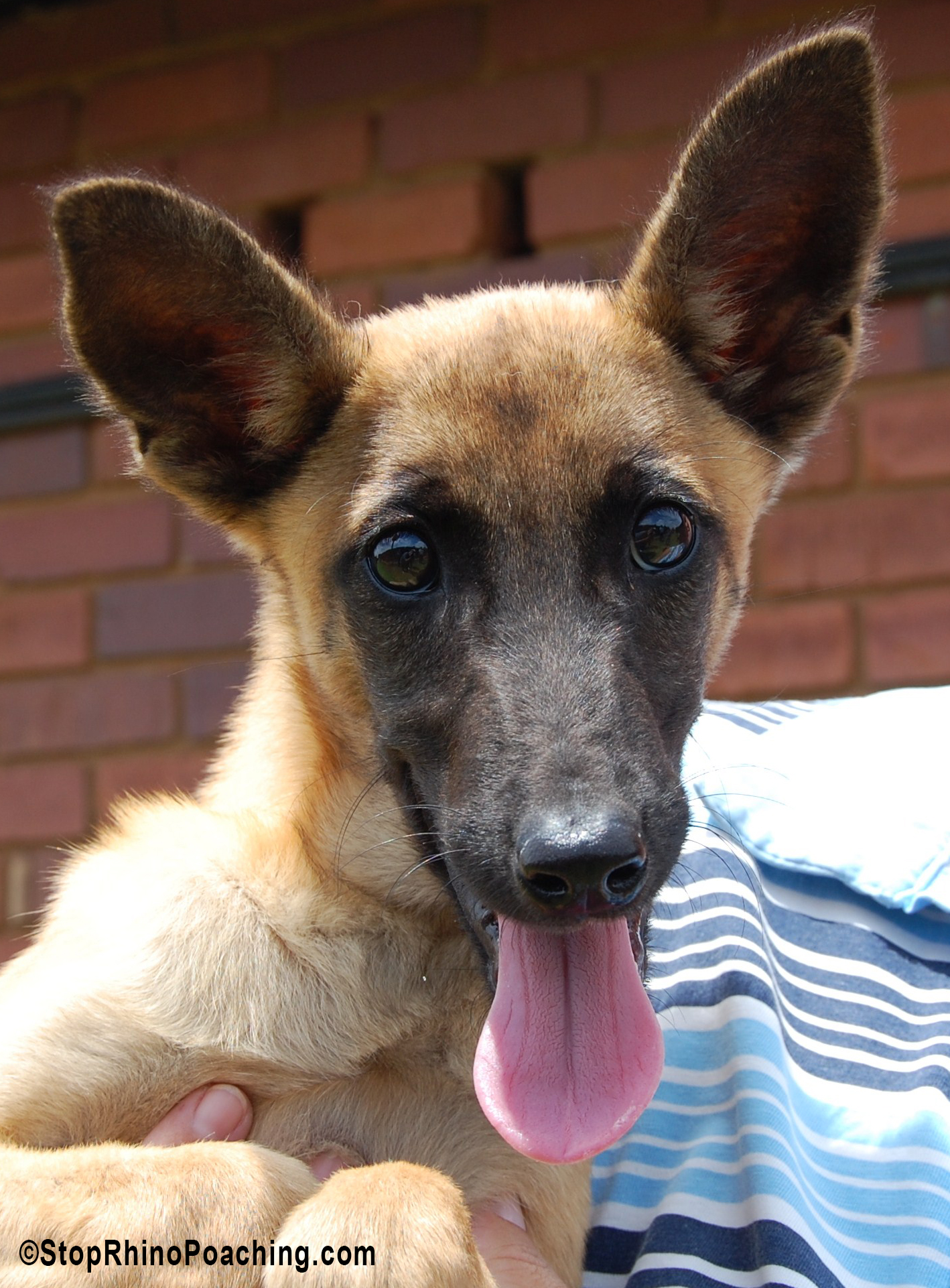
You start with observing the litter.
A puppy’s temperament becomes noticeable as soon as they start getting mobile and active. Trainers will look for characteristics which make a puppy stand out early on – like confidence, temperament and play drive.
We like dogs with prey drive. Prey drive is when a dog likes to chase moving objects. It’s also important that the dog must have confidence. When I have to choose a puppy, I like the puppy that comes to me to investigate (this shows confidence) and when I walk it must grab my shoe laces and pants (this shows prey drive). – Johan van Straaten, Dog Master: K9 Protected Area Integrity, Southern African Wildlife College
Training Begins
Dog trainers begin testing dogs for very basic skills — like sniffing for treats — at around 8 weeks of age. These training sessions are very short but give an early indicator of the puppy’s temperament and willingness to work. During the puppy phase it’s important that they are well socialized and used to a variety of situations and conditions that they might encounter in their working career. Puppies that have been identified as possible detection dogs should be comfortable in crowds, such as what would be found in a busy airport. Alternately, a shy puppy that lacks confidence in crowds will not make a good detection dog, but might well show excellent potential as a tracking dog working with a small team of rangers.
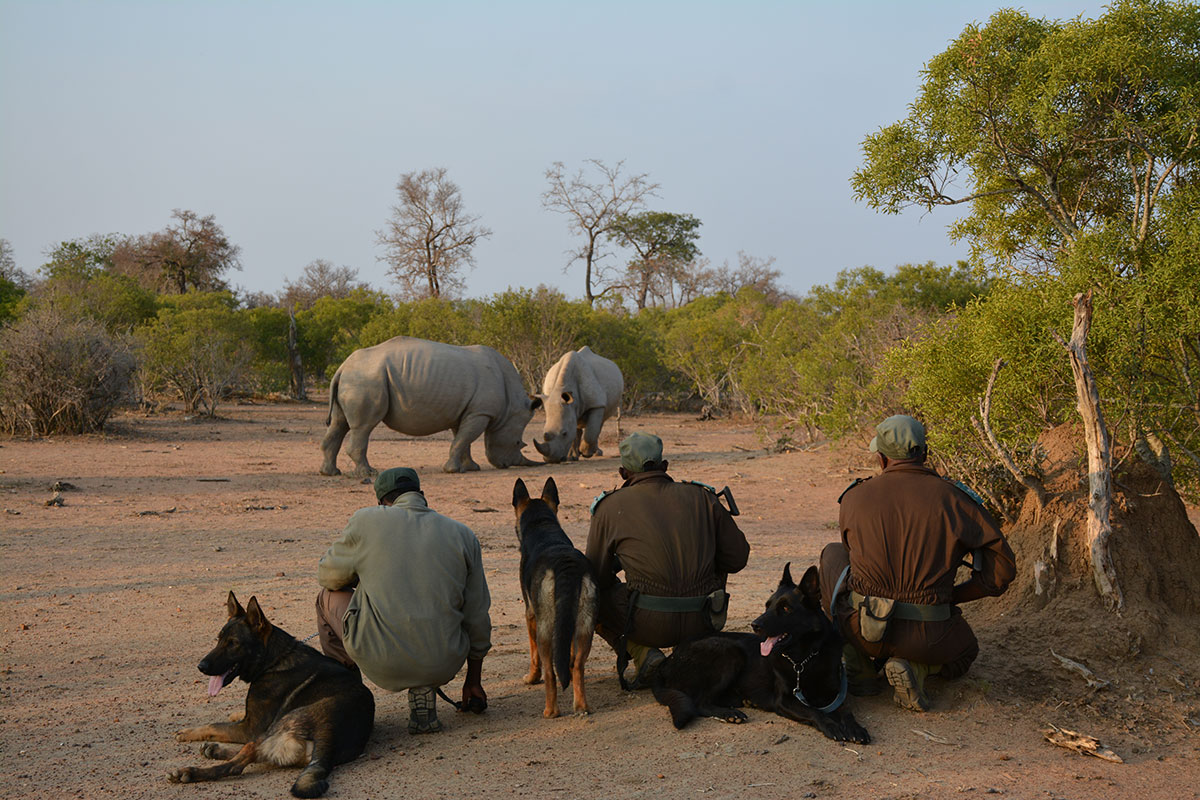
Job Designation
A lot of time and effort is taken to train a dog in the field in which it will thrive, each individual dog’s strong points and weaknesses need to be identified. To determine their strengths, the pups are evaluated regularly for progress. All dogs are trained with positive reinforcement – this means that, for them, working is more like playing to get a reward from their handler. Their reward could be anything from a ball, food, or toy.
At around 10-months to one year of age, the dogs are ready for specialized training in whichever category suits their personality best. Some dogs are brilliant tracker dogs but don’t like biting, others are excellent day trackers but are afraid of working at night. Some are natural all rounders that can be trained in multiple disciplines like human tracking and detection. Detection dogs are also trained to sniff out rhino horn, ivory, guns & ammo, pangolin, leopard skin and cannabis – or a combination of these depending on what’s needed. They can also be used to search vehicles, crime scenes and buildings.
This final training takes about 3 to 4 months before they are placed in their permanent position. During this time, the handler and dog are trained together as a team. It is imperative that each totally understands and trusts each other. Discipline plays a big role in the life of a working dog, as it does a handler. Aside from being trained in the aspects to relating to his dog’s function, handlers are also taught husbandry and care of their dogs and well as basic training and routine exercises to keep them fit and happy.
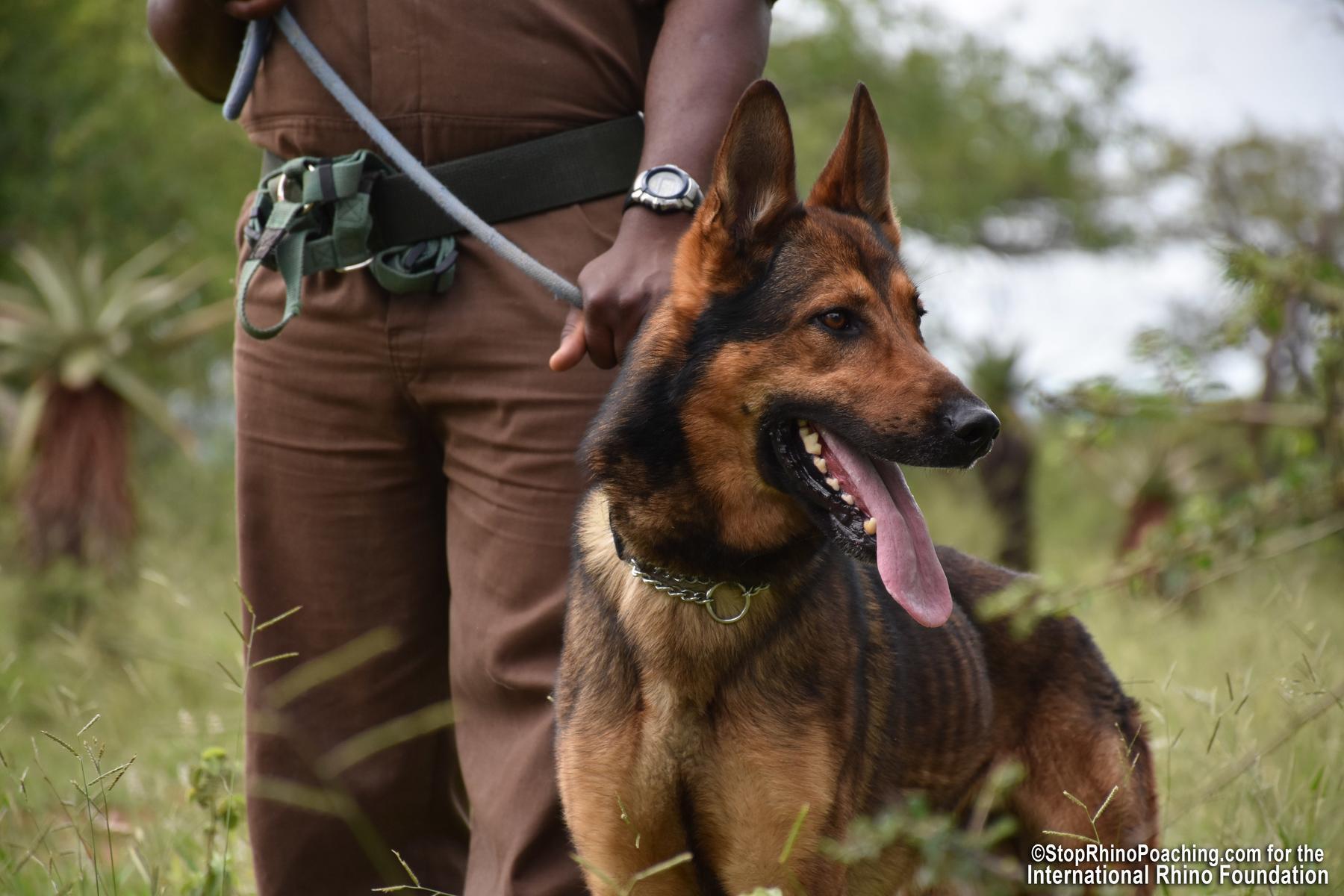
IRF is partnering with South Africa’s StopRhinoPoaching.com to provide dogs trained to track poachers by following their scent in the bush, protect handlers and rangers, detect ammunition (which poachers often stash prior to a poaching event), and locate the horns of poached rhinos at road blocks and security check points. Read more about this project here.
